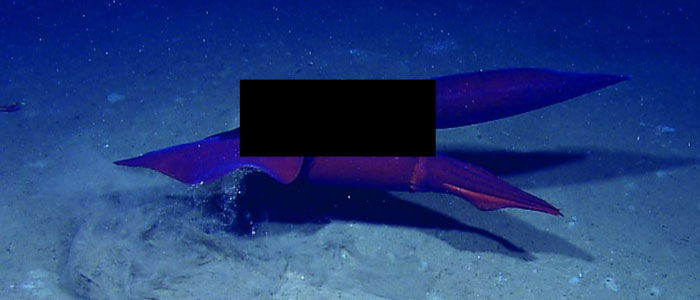Happy New Year!
It’s been an eventful year at the Smithsonian: we’ve welcomed Bao Bao the baby panda, announced the discovery of new species, weathered a government shutdown and put on our Xray specs. Take a quick look back at some of the most memorable Smithsonian stories of 2013.
January
Great Apes at the Zoo embrace technology, complain about WiFi connection
Keepers at the Zoo are using iPads to entertain and enrich the orangutans in their care. The apes have not yet learned to text, thankfully.
February

In a screen grab from video taken by a dashboard camera, a streak could be seen in the sky on a highway from Kostanai, Kazakhstan to the Chelyabinsk region in Russia. (www.ng.kz, via Associated Press)
Keep watching the skies! (But don’t forget to duck)
A dramatic meteorite strike in Russia raised a lot of questions. We had the answers in our first live Reddit AMA.
March
Six pioneering women scientists you’ve never heard of
Quick, name a pioneering female scientist…other than Marie Curie. Thought so. Here’s a chance to broaden your education.
April
Going the extra mile every day: 2013 Unsung Hero Awards
We all hear about the superstars—the colleagues who make scientific breakthroughs or uncover brilliant young artists or unravel historic mysteries—but what about those colleagues who do exceptional work at indispensable jobs that never make the news?\
May

This August 2012 photo shows four shallow chops to an incomplete skull excavated in James Fort, Jamestown, Va. (Photo by Don Hurlbert)
Startling proof of American cannibalism
Forensic evidence shows that early colonists resorted to survival cannibalism during the “starving time” of 1609-1610.
June

This artist’s conception portrays two neutron stars at the moment of collision. New observations confirm that colliding neutron stars produce short gamma-ray bursts. Such collisions produce rare heavy elements, including gold. All Earth’s gold likely came from colliding neutron stars. (Credit: Dana Berry, SkyWorks Digital, Inc.)
We are stardust, we are golden–and so is our bling
All the gold that exists in the universe is created in the cataclysmic collision of dead stars. Mind-blowing, right?
July

A team, led by Smithsonian scientist Kristofer Helgen, spent 10 years examining hundreds of museum specimens and tracking animals in the wild in the cloud forests of Ecuador. The result―the newest species of mammal known to science, the olinguito (Bassaricyon neblina). (Photo by Mark Gurney)
Mysterious carnivore has been a victim of mistaken identity for more than a century
A team of Smithsonian scientists discovered a new species of carnivore–the first in the Western Hemisphere in decades.
August
We promised we wouldn’t say it, but we just have to…it’s Pandamonium!
The entire Washington, D.C., metropolitan ground to a halt after a new panda cub is born at the Zoo.
September
Secretary Wayne Clough announces his retirement
The 12th Secretary of the Smithsonian Institution will step down in October 2014
October

This image is a microscope photograph of a piece of shale from the Kishenehn Formation in northwestern Montana containing the fossil of a blood-engorged mosquito. Scientists from the Smithsonian and the Natural History Museum in London have discovered biomolecules from the blood in the mosquito’s abdomen that have been preserved for 46 million years.
The Amazing Trace: Blood molecules survive for millions of years
A tiny, blood-engorged mosquito has extended the fossil record millions of years. But don’t get your hopes up for a real-life “Jurassic Park.”
November

This life-size limestone figure is covered in low-relief etchings of narrative scenes, providing a rare glimpse into early Chinese vision of the Buddhist cosmos, as portrayed in a symbolic map of the universe. Traces of pigment on the surface suggest that the dense design was originally painted, making the scenes easier to read.
How do you bring 137 million objects to life?
As the Smithsonian continues to digitize our vast resources, we have unveiled an exciting new way to really get up close and personal with the objects in our premier 3D collection.
December

Visitors explore the lab area of the National Museum of Natural History’s new education center, Q?rius, in Washington, D.C. (Phot by James Di Loreto)
Q?rius will combine labs, collections, creative studios and hangout spots in a new state-of-the-art learning space for teens.
And finally, as a bonus for those of you patient enough to scroll down this far, allow us to present our favorite combination of journalistically irresponsible headline trolling and shamelessly Photoshopped illustration. You’re welcome.
Squid porn! The first video ever to capture the mating behavior of a deep-sea squid species.
Posted: 31 December 2013
- Categories:









